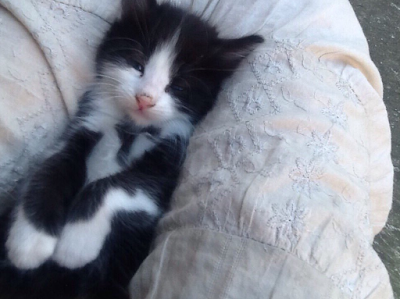It's September 30, which in my personal calendar marks a special occasion: it's International Podcast Day!
I've been an avid podcast listener ever since I first discovered the world of podcasting. That was in the autumn of 2004, at the time when I had two jobs, and had to take long and boring daily commutes. Thanks to my first iPod, those countless hours spent in public transport - which would otherwise have been totally wasted - transformed into hours spent listening to thought-provoking interviews, exciting radio drama series, and educational programmes.
Podcasting market has since grown exponentially, with podcasts on pretty much every subject imaginable. As with YouTube channels, not all are good, and it can take time to find the ones that will really resonate with you while being at a high level of production quality. To help sift through thousands of podcasts out there, I've compiled a list of top 5 podcasts that caught my attention since last September. This is my third annual list, and since I still regularly listen to all of the podcasts I mentioned back in 2016 and 2017, do have a look at those earlier lists as well.
At the moment I'm subscribed to over seventy podcasts. Granted, I don't listen to all of them on a weekly - let alone daily - basis, but one that I make sure to follow regularly is Ideas, coming from Canada's public broadcaster. First launched in 1965, it's one of CBC Radio's flagship programmes, now available also as a podcast. It's described as a series of "documentaries in which thoughts are gathered, contexts explored, and connections made." If you're into humanities, or just have an inquisitive mind, don't miss this one.
Remember Heaven's Gate, a religious cult involved in a 1997 mass suicide? This 10-episode documentary series presents a unique insight into the workings of this group and the kind of mentality that ultimately led to thirty-nine deaths. It's a captivating story, including interviews with former members, and authentic audio material that wasn't previously publicly available.
There are loads and loads of audio lectures in podcast format, released by prominent universities. With background in Classics, I'm partial to this one. I used it as a kind of refresher course in Greek history, also curious to see how the subject is taught at Yale. Lectures are held by Prof. Donald Kagan (recorded in 2007), and are also available on YouTube, and the Open Yale Courses website, where you can download additional material. The subject matter is presented in a simple and inviting way: it's an introductory course, and you definitely needn't worry that you wouldn't be able to follow. The entire course consists of 24 lectures, each about an hour long.
And in case the name Donald Kagan doesn't ring a bell, have a look at the 2013 article on him in the Chronicle of Higher Education. He may not be to everyone's liking (ideologically speaking), but as a historian and classicist, he knows his stuff.
A treasure among podcasts. Hosted by Mark Norman, a British folklorist and researcher, affiliated with the Folklore Society and the celebrated Museum of Witchcraft and Magic. As the title indicates, the podcast - continuously running since 2016 - deals with traditions, customs and myths. Episodes include interviews with leading experts in this fascinating field. On the website, you can support Mark's work by purchasing supplementary e-zines and merchandise.
I always aim to feature at least one podcast from the Religion & Spirituality category, which continues to be one of my favourite ones. Over the years, my interests within that category have largely shifted, from more conventional onto those dealing with pagan spirituality or the paranormal. Luckily, there's a good deal of podcasts on these and related subjects, and one of the best ones is Shift Your Spirits hosted by Slade Robertson. It contains talks and interviews in which Slade and his guests address a range of topics, from spiritualism and witchcraft to wellness and astrology. There's something here for everyone who is more into, shall we say, an alternative way of looking at things.




























